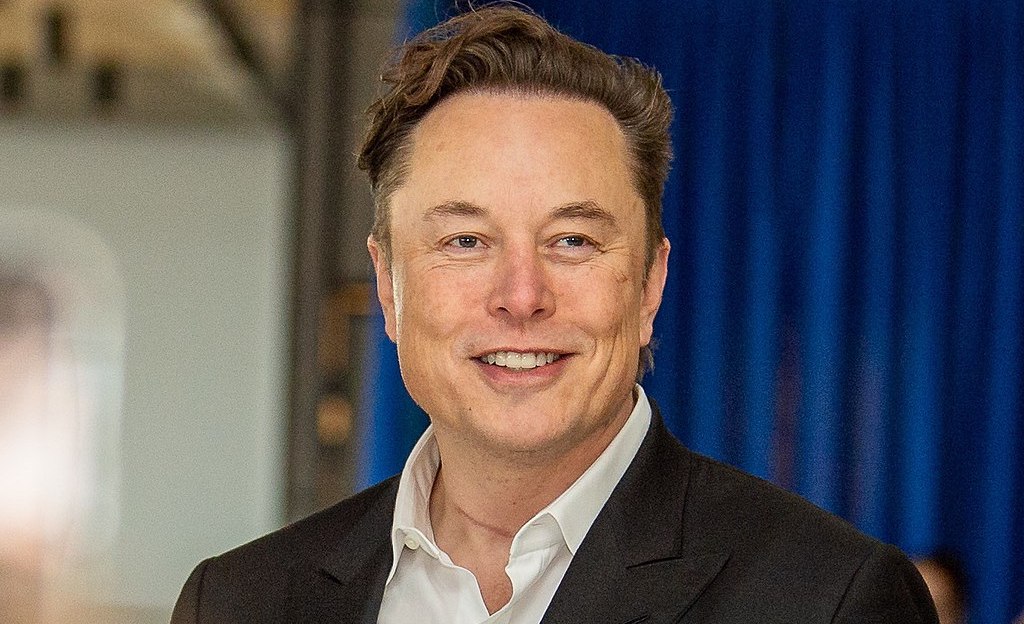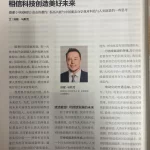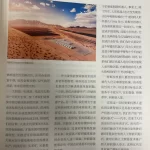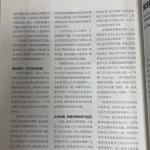

News
New Elon Musk essay: Tesla CEO’s current thoughts on technology and humanity
It’s been a while since Elon Musk published an extensive blog post outlining his stance on a specific topic. On the official Tesla website, his last blog post was on August 24, 2018, when he explained his decision to keep Tesla a publicly-traded company. Fortunately, a new Elon Musk essay has been posted in China, outlining the Tesla CEO’s thoughts on a number of topics — from sustainability, the Tesla Bot’s real-world use, Neuralink’s focus on the disabled, and SpaceX’s exploration aspirations.
The new Elon Musk essay was published in China Cyberspace, the Cyberspace Administration of China’s (CAC) flagship magazine. A translation of the essay was posted by Yang Liu, a journalist from the state-owned news agency Xinhua, on the Beijing Channel blog. As could be seen in Liu’s post, Musk actually discussed a number of topics in detail.
In a way, the publication of the new Elon Musk essay in the CAC’s flagship magazine is significant. As noted by The Register, Musk’s essay suggests that Chinese authorities approve of the Tesla CEO’s positions on the topics he discussed. Only a few other foreign entrepreneurs would likely be given the same honor.
Following is the full text of Elon Musk’s new essay.
Believing in Technology for a Better Future
Thank you for the invitation from China Cyberspace magazine. I am pleased to share with my Chinese friends some of my thoughts on the vision of technology and humanity.
Posted by Elon Musk
As technology accelerates, it may one day surpass human understanding and control. Some are optimistic and some are pessimistic. But I believe that as long as we are not complacent and always maintain a sense of urgency, the future of humanity will be bright, driven by the power of technology. It is like a self-fulfilling prophecy: if humans want to make the future good, they should take action to make it good.
I want to do everything we can to maximize the use of technology to help achieve a better future for humanity. To that end, any area that contributes to a sustainable future is worthy of our investment. Whether it’s Tesla, Neuralink, or SpaceX, these companies were all founded with the ultimate goal of enhancing the future of human life and creating as much practical value for the world as possible—Tesla to accelerate the world’s transition to sustainable energy, Neuralink for medical rehabilitation, SpaceX for making interstellar connections possible.
Clean Energy: The Future of Sustainability
The starting point for my thinking about clean energy is how to create and store energy sustainably and for the long term, and how to provide a constant source of power for the future of productive life. In my view, the future of sustainable energy involves three components.
The generation of sustainable energy. The sun is like a giant fusion generator, from which mankind currently exploits a tiny amount of energy. In the long run, solar energy will become the main source of energy for human civilization. Of course, wind, hydroelectric, geothermal, and nuclear power are also useful energy supplements.
The storage of sustainable energy. Given the change of day and night and the change of weather, we need a lot of fixed battery banks to store solar and wind energy, because the sun does not shine all the time, and the wind does not blow all the time, energy needs to be stored in a large number of fixed battery banks.
Electrified transportation. Full electrification of transportation, including cars, planes, and ships. Electric rockets may be more difficult, but we may be able to manufacture the propellant used in rockets from sustainable energy sources. Eventually, the world economy will be run entirely by sustainable energy sources.
The world is on track for a sustainable energy transition, and humanity should continue to accelerate the process. The faster this transition is achieved, the less risk humanity poses to the environment and the more it will gain. When clean energy is available, carbon sequestration and desalination will be cheaper, climate change and water shortages will be solved, and when fossil fuels are out of the picture, the skies will be cleaner, the world will be quieter, the air will be fresher, and the future will be brighter.
Solar power, battery packs, and electric vehicles paint a rosy picture. Next, we need to focus on the limiting factors. The electrification of cars has become a consensus among nations, but battery support on a terawatt-hour scale is needed to roll out pure electric vehicles around the globe. According to our estimates, the world needs about 300 TWh of battery storage to achieve a transition to sustainable energy. The biggest difficulty in advancing sustainable energy lies in the large-scale production of lithium battery cells. Specifically, from the mining and element refining to battery cells coming off of the production line and finally assembled into battery packs, this is a complex process that is restraining the rapid development of a sustainable energy economy.
As a pioneer and innovator focusing on energy innovation technology, Tesla was founded to solve the problem of energy innovation. On the one hand, we create integrated sustainable energy products from the three segments of energy production, storage and use; on the other hand, we are committed to redefining battery manufacturing by innovating and developing advanced battery technology to remove restrictions on battery capacity. I believe that the world will transition to a sustainable future through a combination of solar and wind energy plus battery storage and electric vehicles. I am pleased to see more and more companies joining this field. Chinese companies will be a force to be reckoned with in the cause of energy innovation.
Humanoid Robots: Doing What Humans Do
Today’s cars are increasingly like smart, web-connected robots on wheels. In fact, in addition to cars, humanoid robots are also becoming a reality, with Tesla launching a general-purpose humanoid robot (Tesla Bot) in 2021. The Tesla Bot is close to the height and weight of an adult, can carry or pick up heavy objects, walk fast in small steps, and the screen on its face is an interactive interface for communication with people. You may wonder why we designed this robot with legs. Because human society is based on the interaction of a bipedal humanoid with two arms and ten fingers. So if we want a robot to adapt to its environment and be able to do what humans do, it has to be roughly the same size, shape, and capabilities as a human.
Tesla Bots are initially positioned to replace people in repetitive, boring, and dangerous tasks. But the vision is for them to serve millions of households, such as cooking, mowing lawns, and caring for the elderly.
Achieving this goal requires that robots evolve to be smart enough and for us to have the ability to mass produce robots. Our “four-wheeled robots” – cars – have changed the way people travel and even live. One day when we solve the problem of self-driving cars (i.e., real-world artificial intelligence), we will be able to extend artificial intelligence technology to humanoid robots, which will have a much broader application than cars.
We plan to launch the first prototype of a humanoid robot this year and focus on improving the intelligence of that robot and solving the problem of large-scale production. Thereafter, humanoid robots’ usefulness will increase yearly as production scales up and costs fall. In the future, a home robot may be cheaper than a car. Perhaps in less than a decade, people will be able to buy a robot for their parents as a birthday gift.
It is foreseeable that with the power of robots, we will create an era of extreme abundance of goods and services, where everyone can live a life of abundance. Perhaps the only scarcity that will exist in the future is for us to create ourselves as humans.
Neuralink: Empowering the Disabled
Some of our Chinese friends may not be as familiar with Neuralink as with electric cars. These companies focus on developing computer-human brain fusion technologies, developing brain chips the size of coins, similar to wearable devices such as smartphones, except that they integrate more deeply with the user’s body—recording and stimulating brain activity through implants in the cerebral cortex.
At this stage, the technology is helping injured people on an individual level. We have received many saddening letters: a 25-year-old young man was in the prime of his life when he had a motorcycle accident that left him unable to eat on his own, which is a great grief for the individual and the family. In light of this, brain-machine interface technology will be focused on curing or alleviating brain injury and other related disorders in the years to come. For example, it could help restore sensory or motor function to limbs of those with spinal injuries and mental system disorders or allow quadriplegics to use their brains to easily operate computers or cell phones.
This technology can also improve a wider range of brain injury problems, whether these disorders are congenital or accidental, or caused by age and external stressors, including severe depression, morbid obesity, sleep problems, and underlying schizophrenia, all of which are expected to be alleviated by human-computer devices.
With the development of brain-machine interface technology, in the long term, this connection is expected to expand the channels of communication between the outside world and the human brain, “accessing” more brain regions and new neural data. This technology could allow humans to effectively integrate with artificial intelligence and ultimately expand new ways for humans to interact with the world, themselves and others. Even if the goal of human-machine integration is difficult to achieve, brain-machine interface technology could be of great value in the field of medical rehabilitation.
Space Exploration: The Possibility of Cross-Planet Habitats
Finally, my greatest hope is that humans create a self-sustaining city on Mars. Many people ask me why I want to explore outer space and turn humans into multi-planetary creatures. In the vast universe, human civilization is like a faint little candle, like a little shimmering light in the void. When the sun expands one day and the Earth is no longer habitable, we can fly to a new home in a spaceship. If humans can inhabit other planets, it means that they have passed one of the conditions of the great screening of the universe, then we will become interplanetary citizens, and human civilization will be able to continue.
The first step toward interplanetary habitat is to reduce the cost of travel, which is what SpaceX was founded to do – first by building recoverable rockets and then by building reusable mega-ships with ever-increasing carrying capacity. As of earlier this year, SpaceX had successfully reused 79 rockets to deliver cargo to the space station and send ordinary people into space. We have also designed and built the largest launch vehicle in history, the Starship, which can carry 100 passengers and supplies at a time. In the future, we plan to build at least 1,000 Starships to send groups of pioneers to Mars to build a self-sustaining city.
As technology continues to change lives at an accelerating pace and the world evolves, life is more than simply solving one problem after another. We all want to wake up in the morning full of anticipation for the future and rejoice in what is to come. I hope more people will join us in our fight to accelerate the world’s transition to sustainable energy. I also welcome more like-minded Chinese partners to join us in exploring clean energy, artificial intelligence, human-machine collaboration, and space exploration to create a future worth waiting for.
***
Don’t hesitate to contact us with news tips. Just send a message to simon@teslarati.com to give us a heads up.
Elon Musk
Tesla Supercharger Diner food menu gets a sneak peek as construction closes out
What are you ordering at the Tesla Diner?

The Tesla Supercharger Diner in Los Angeles is nearing completion as construction appears to be winding down significantly. However, the more minor details, such as what the company will serve at its 50s-style diner for food, are starting to be revealed.
Tesla’s Supercharger Diner is set to open soon, seven years after CEO Elon Musk first drafted the idea in a post on X in 2018. Musk has largely come through on most of what he envisioned for the project: the diner, the massive movie screens, and the intended vibe are all present, thanks to the aerial and ground footage shared on social media.
We already know the Diner will be open 24/7, based on decals placed on the front door of the restaurant that were shared earlier this week. We assume that Tesla Optimus will come into play for these long and uninterrupted hours.
The Tesla Diner is basically finished—here’s what it looks like
As far as the food, Tesla does have an email also printed on the front door of the Diner, but we did not receive any response back (yet) about what cuisine it will be offering. We figured it would be nothing fancy and it would be typical diner staples: burgers, fries, wings, milkshakes, etc.
According to pictures taken by @Tesla_lighting_, which were shared by Not a Tesla App, the food will be just that: quick and affordable meals that diners do well. It’s nothing crazy, just typical staples you’d find at any diner, just with a Tesla twist:
Tesla Diner food:
• Burgers
• Fries
• Chicken Wings
• Hot Dogs
• Hand-spun milkshakes
• And more https://t.co/kzFf20YZQq pic.twitter.com/aRv02TzouY— Sawyer Merritt (@SawyerMerritt) July 17, 2025
As the food menu is finalized, we will be sure to share any details Tesla provides, including a full list of what will be served and its prices.
Additionally, the entire property appears to be nearing its final construction stages, and it seems it may even be nearing completion. The movie screens are already up and showing videos of things like SpaceX launches.
There are many cars already using the Superchargers at the restaurant, and employees inside the facility look to be putting the finishing touches on the interior.
🚨 Boots on the ground at the Tesla Diner:
— TESLARATI (@Teslarati) July 17, 2025
It’s almost reminiscent of a Tesla version of a Buc-ee’s, a southern staple convenience store that offers much more than a traditional gas station. Of course, Tesla’s version is futuristic and more catered to the company’s image, but the idea is the same.
It’s a one-stop shop for anything you’d need to recharge as a Tesla owner. Los Angeles building permits have not yet revealed the date for the restaurant’s initial operation, but Tesla may have its eye on a target date that will likely be announced during next week’s Earnings Call.
News
Tesla’s longer Model Y did not scale back requests for this vehicle type from fans
Tesla fans are happy with the new Model Y, but they’re still vocal about the need for something else.

Tesla launched a slightly longer version of the Model Y all-electric crossover in China, and with it being extremely likely that the vehicle will make its way to other markets, including the United States, fans are still looking for something more.
The new Model Y L in China boasts a slightly larger wheelbase than its original version, giving slightly more interior room with a sixth seat, thanks to a third row.
Tesla exec hints at useful and potentially killer Model Y L feature
Tesla has said throughout the past year that it would focus on developing its affordable, compact models, which were set to begin production in the first half of the year. The company has not indicated whether it met that timeline or not, but many are hoping to see unveilings of those designs potentially during the Q3 earnings call.
However, the modifications to the Model Y, which have not yet been officially announced for any markets outside of China, still don’t seem to be what owners and fans are looking forward to. Instead, they are hoping for something larger.
A few months ago, I reported on the overall consensus within the Tesla community that the company needs a full-size SUV, minivan, or even a cargo van that would be ideal for camping or business use.
Tesla is missing one type of vehicle in its lineup and fans want it fast
That mentality still seems very present amongst fans and owners, who state that a full-size SUV with enough seating for a larger family, more capability in terms of cargo space for camping or business operation, and something to compete with gas cars like the Chevrolet Tahoe, Ford Expedition, or electric ones like the Volkswagen ID.BUZZ.
We asked the question on X, and Tesla fans were nearly unanimously in support of a larger SUV or minivan-type vehicle for the company’s lineup:
🚨 More and more people are *still* saying that, despite this new, longer Model Y, Tesla still needs a true three-row SUV
Do you agree? https://t.co/QmbRDcCE08 pic.twitter.com/p6m5zB4sDZ
— TESLARATI (@Teslarati) July 16, 2025
Here’s what some of the respondents said:
100% agree, we need a larger vehicle.
Our model Y is quickly getting too small for our family of 5 as the kids grow. A slightly longer Y with an extra seat is nice but it’s not enough if you’re looking to take it on road trips/vacations/ kids sports gear etc.
Unfortunately we…
— Anthony Hunter (@_LiarsDice_) July 17, 2025
Had to buy a Kia Carnival Hybrid because Tesla doesn’t have a true 3 row vehicle with proper space and respectable range. pic.twitter.com/pzwFyHU8Gi
— Neil, like the astronaut (@Neileeyo) July 17, 2025
Agreed! I’m not sure who created this but I liked it enough to save it. pic.twitter.com/Sof5nMehjS
— 🦉Wise Words of Wisdom – Inspirational Quotes (IQ) (@WiseWordsIQ) July 16, 2025
Tesla is certainly aware that many of its owners would like the company to develop something larger that competes with the large SUVs on the market.
However, it has not stated that anything like that is in the current plans for future vehicles, as it has made a concerted effort to develop Robotaxi alongside the affordable, compact models that it claims are in development.
It has already unveiled the Robovan, a people-mover that can seat up to 20 passengers in a lounge-like interior.
The Robovan will be completely driverless, so it’s unlikely we will see it before the release of a fully autonomous Full Self-Driving suite from Tesla.
Energy
Tesla launches first Virtual Power Plant in UK – get paid to use solar
Tesla has launched its first-ever Virtual Power Plant program in the United Kingdom.

Tesla has launched its first-ever Virtual Power Plant program in the United Kingdom. This feature enables users of solar panels and energy storage systems to sell their excess energy back to the grid.
Tesla is utilizing Octopus Energy, a British renewable energy company that operates in multiple markets, including the UK, France, Germany, Italy, Spain, Australia, Japan, New Zealand, and the United States, as the provider for the VPP launch in the region.
The company states that those who enroll in the program can earn up to £300 per month.
Tesla has operated several VPP programs worldwide, most notably in California, Texas, Connecticut, and the U.S. territory of Puerto Rico. This is not the first time Tesla has operated a VPP outside the United States, as there are programs in Australia, Japan, and New Zealand.
This is its first in the UK:
Our first VPP in the UK
You can get paid to share your energy – store excess energy in your Powerwall & sell it back to the grid
You’re making £££ and the community is powered by clean energy
Win-win pic.twitter.com/evhMtJpgy1
— Tesla UK (@tesla_uk) July 17, 2025
Tesla is not the only company that is working with Octopus Energy in the UK for the VPP, as it joins SolarEdge, GivEnergy, and Enphase as other companies that utilize the Octopus platform for their project operations.
It has been six years since Tesla launched its first VPP, as it started its first in Australia back in 2019. In 2024, Tesla paid out over $10 million to those participating in the program.
Participating in the VPP program that Tesla offers not only provides enrolled individuals with the opportunity to earn money, but it also contributes to grid stabilization by supporting local energy grids.
-

 Elon Musk1 day ago
Elon Musk1 day agoWaymo responds to Tesla’s Robotaxi expansion in Austin with bold statement
-

 News1 day ago
News1 day agoTesla exec hints at useful and potentially killer Model Y L feature
-

 Elon Musk2 days ago
Elon Musk2 days agoElon Musk reveals SpaceX’s target for Starship’s 10th launch
-

 Elon Musk3 days ago
Elon Musk3 days agoTesla ups Robotaxi fare price to another comical figure with service area expansion
-

 News1 day ago
News1 day agoTesla’s longer Model Y did not scale back requests for this vehicle type from fans
-

 News1 day ago
News1 day ago“Worthy of respect:” Six-seat Model Y L acknowledged by Tesla China’s biggest rivals
-

 News2 days ago
News2 days agoFirst glimpse of Tesla Model Y with six seats and extended wheelbase
-

 Elon Musk2 days ago
Elon Musk2 days agoElon Musk confirms Tesla is already rolling out a new feature for in-car Grok











